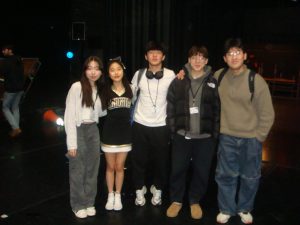What did 2020 do to the Fast Fashion Industry?
March 31, 2021

2020. The year that woke the fashion industry up. Sales plummeted and stores closed, retail companies raced to modernize online and salvage their businesses. A gruesome future was ahead. The old wounds, which hid years of abuse and oppressive behaviors by the fast fashion underworld, gushed open. Fashion is culture and culture is fashion. The year of massive cultural change had commenced, and thus the industry had but only one choice: to evolve or die trying.
As the Covid-19 pandemic wreaked havoc on the world, the fashion industry, like most industries, struggled. It grasped at straws in an attempt to stay afloat. Its usual customs were gone. Malls became ghost towns and major retailers, like the Neiman Marcus Group, J.C. Penny, and more, were forced to file for bankruptcy. Overall, clothing sales plummeted by 34% in March. Therefore, the only chance of survival was to adapt. Thus, many clothing companies moved online.
While there had been an increase in online shopping, the overall direction of the industry continued to plummet. In December, the annual “State of Fashion” analytics report announced that the fashion industry’s economic profit would be down 93% by the end of 2020. The reason for this downfall? Consumer behavior was and is no longer the same. With surging mass unemployment rates, people no longer have the money to spend on new clothing. National lockdowns and quarantines kept customers away from physical stores that many clothing retailers relied on. In a state of distress, few people are focused on purchasing clothing, as most are at home. With that comes a lack of motivation to dress up or follow new fashion trends. The only true winners of the fashion industry were brands that focused on athleisure and loungewear.
This is a trend seen throughout our peers.“Because there hasn’t been an occasion to go out or spend time with friends, I’ve been unmotivated to shop for cute clothes that I would normally wear outside of my house,” said Sophia Shin, a sophomore in AVPA-V.
The most influential change in consumer behavior to the fashion industry, however, may be a deepening sense of morality. During a year with so much political turmoil, racial justice movements, and a pandemic, many people have been reflecting on what it means to be human, and how their actions impact others .
While major fast fashion retailers, like Boohoo, began publicly advising consumers to stay home, behind closed doors, they were forcing their factories to stay open, knowingly putting their employees at risk. This hypocrisy gets to the heart of fast fashion: cheaply producing garments that will sell to consumers, while completely disregarding the well-being and lives of those producing the clothes. Fast fashion is an industry that blatantly abuses its people and virtues for a quick buck, adding to the executives wealth over the integrity of the company.
The call for social justice has made many consumers more aware of these wrongdoings. Social media apps and numerous news stories have also contributed to the rising awareness of fast fashion – often through providing a platform for workers to speak up about the dark truths of the fast fashion industry. For instance, the terrible working conditions at an ASOS warehouse gave way to its nickname, the “cradle of disease”. Employees are forced to work long, strenuous hours in cramped environments – thus, not adhering to the proper social distancing guidelines.
Over the past year, many consumers have realized that they are essentially voting with their money. By purchasing clothing from fast fashion companies, they are supporting the heinous crimes these companies have committed, including the mistreatment of low-paid workers and harm to the environment. On platforms like Tik Tok, many users advocate against fast fashion brands and give alternative recommendations for more sustainable and ethical clothing brands.
Fast Fashion companies are taking the hint. H&M is a notorious clothing retailer, known for not paying living wages to workers in their supply chain and for contributing to the climate crisis. Recently, it has pledged to create a more sustainable business model for the upcoming years. However revolutionary this may sound, it is still unclear how H&M, a company reliant on mass producing cheap clothing, will function as a sustainable brand. Sustainability is usually associated with slow fashion, in which consumers purchase from more ethical brands and buy less clothing, of which may be more expensive but better quality and long lasting. This is no doubt the antithesis of H&M’s current business model.
On the other hand, the pandemic has forced many people to look for cheaper clothes, and it’s important to note that not everyone has the privilege of buying more expensive, more sustainable clothes. Furthermore, as much as consumers control the demand of different products and can pick and choose brands to make popular, the way the fashion industry currently functions means that for most people, it is not possible to always buy from sustainable stores.
“The desire to shop sustainably is a privilege. Some people cannot afford to buy retail-priced clothing, much less think about how ethically sourced they are, and thrift stores are their only option,” said Sophia. “And as much as I try to shop ethically, there’s no escape from fast fashion, although I have been trying to limit my intake.”
Fashion must evolve into a future that is looking increasingly more inclusive, sustainable, ethical, and socially conscious. Anna Wintour, Editor-in-Chief of Vogue, believes there will be “an even deeper desire for fashion and for the best of fashion” coming out of 2020 with “ the mundane and the knock offs and the cheap stuff that is gonna fall by the wayside.” Fashion of 2021 and the future is “gonna be a celebration of what is really the best of what we [the fashion industry] do.” Cheers to a hopefully brighter new year and a refreshed love for fashion – with luck, fashion that is kinder to each other and to our world.





